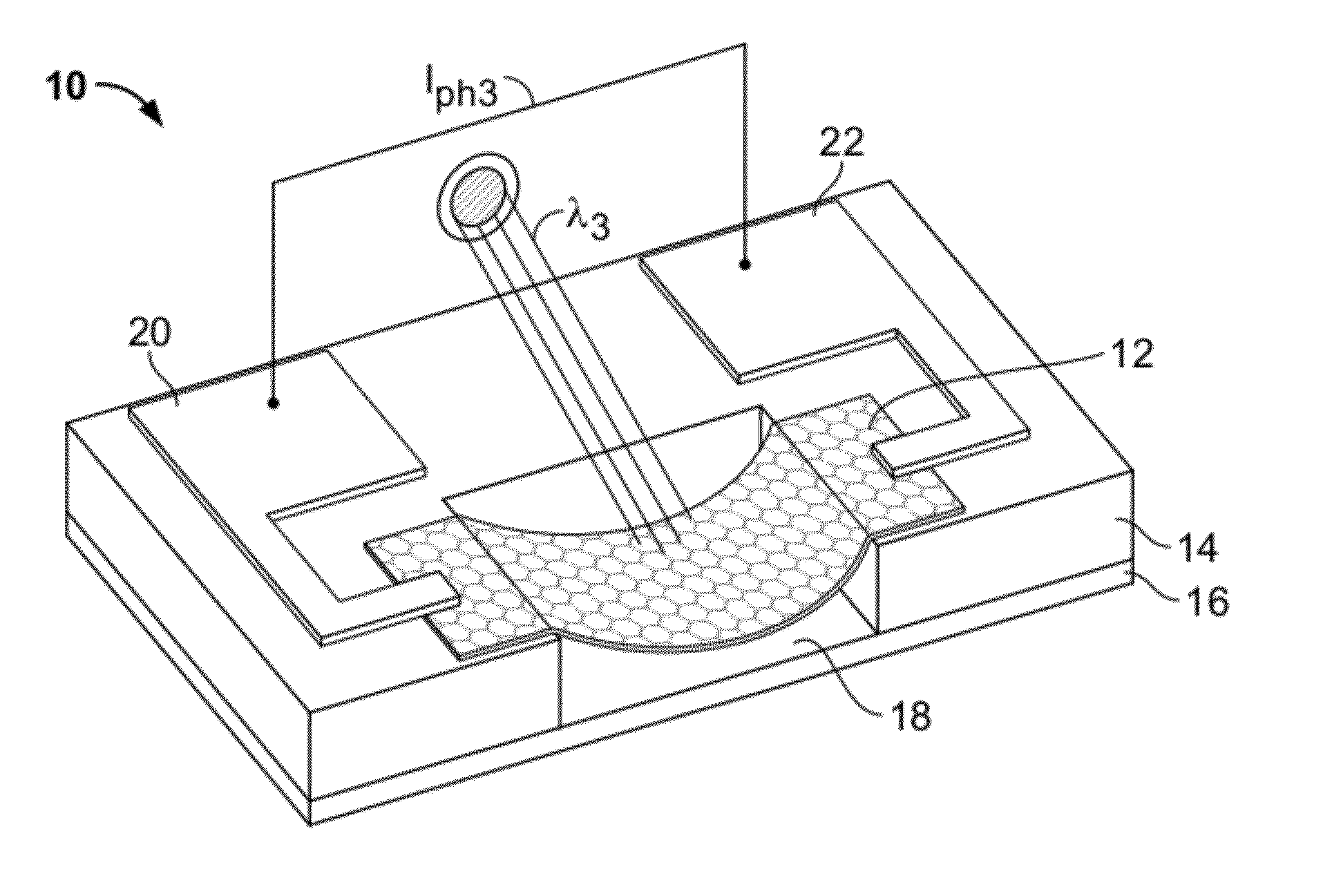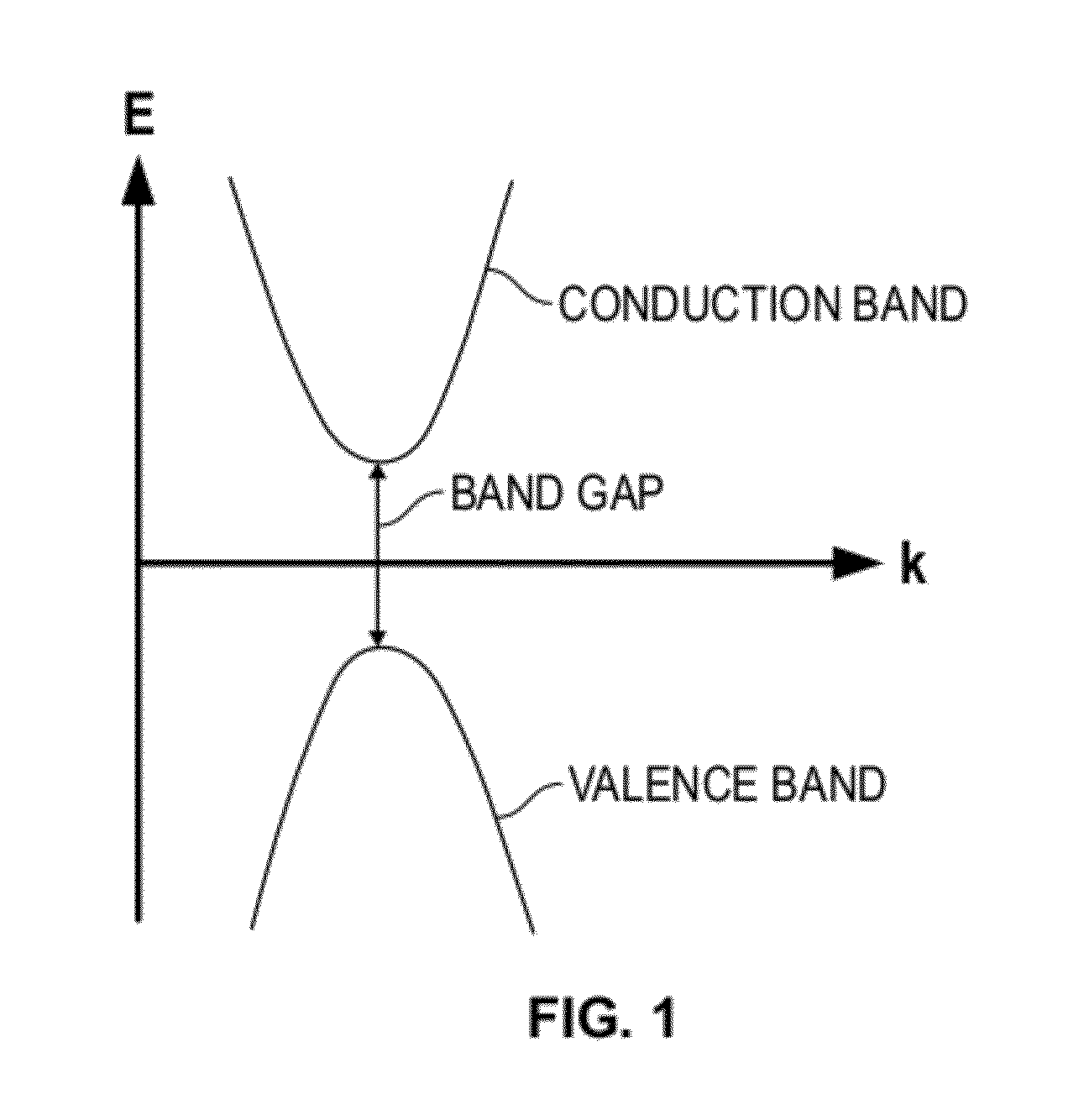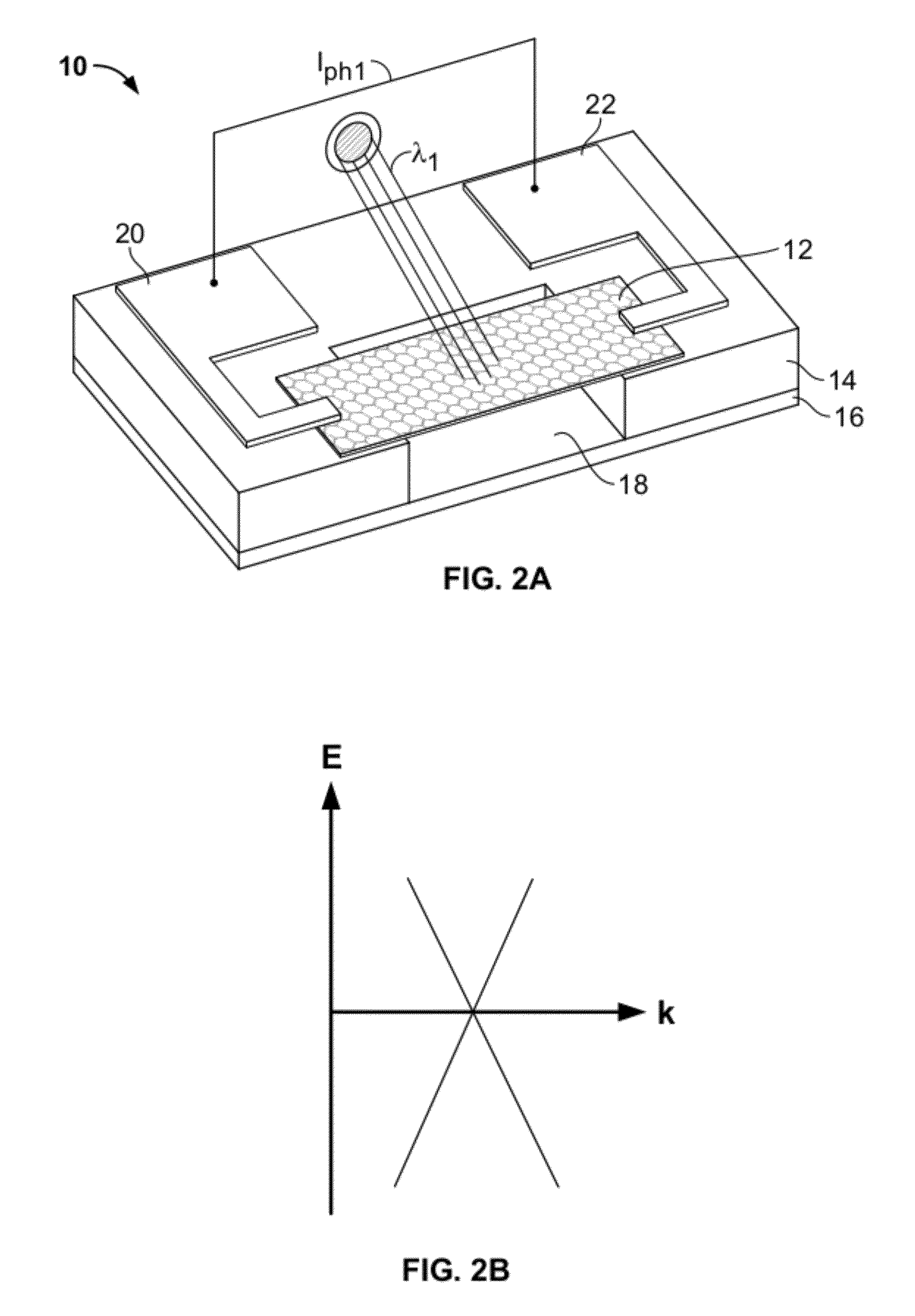Active bandgap tuning of graphene for tunable photodetection applications
a graphene and active bandgap technology, applied in the field of photoelectronic devices, can solve the problems of profound limitation of the usefulness of the photodetector devi
- Summary
- Abstract
- Description
- Claims
- Application Information
AI Technical Summary
Problems solved by technology
Method used
Image
Examples
Embodiment Construction
[0020]The present invention provides methods and devices for active in-situ tuning of the bandgap of a photodetector device by inducing strain in the photodetection material. It has particular applicability to materials such as graphene, carbon nanotubes (CNT) or graphene nanoribbons (GNR), but may also be applied to other photodetection materials having electron valence bands that may be altered by inducing strain in the material. The spectral sensitivity of a photodetector that uses such materials can be continuously modulated to detect a wide range of photon energies or wavelengths (A) of the incident light while the device is in operation. The modulation method is hereinafter referred to as “active bandgap tuning” (ABT). Strain induction in graphene, CNT, GNR or other materials can be achieved actively using conventional MEMS actuation techniques, including and not limited to electrostatic actuation, pneumatic actuation or thermal actuation.
[0021]The ABT technique can be advanta...
PUM
| Property | Measurement | Unit |
|---|---|---|
| temperatures | aaaaa | aaaaa |
| thickness | aaaaa | aaaaa |
| height | aaaaa | aaaaa |
Abstract
Description
Claims
Application Information
 Login to View More
Login to View More - R&D
- Intellectual Property
- Life Sciences
- Materials
- Tech Scout
- Unparalleled Data Quality
- Higher Quality Content
- 60% Fewer Hallucinations
Browse by: Latest US Patents, China's latest patents, Technical Efficacy Thesaurus, Application Domain, Technology Topic, Popular Technical Reports.
© 2025 PatSnap. All rights reserved.Legal|Privacy policy|Modern Slavery Act Transparency Statement|Sitemap|About US| Contact US: help@patsnap.com



